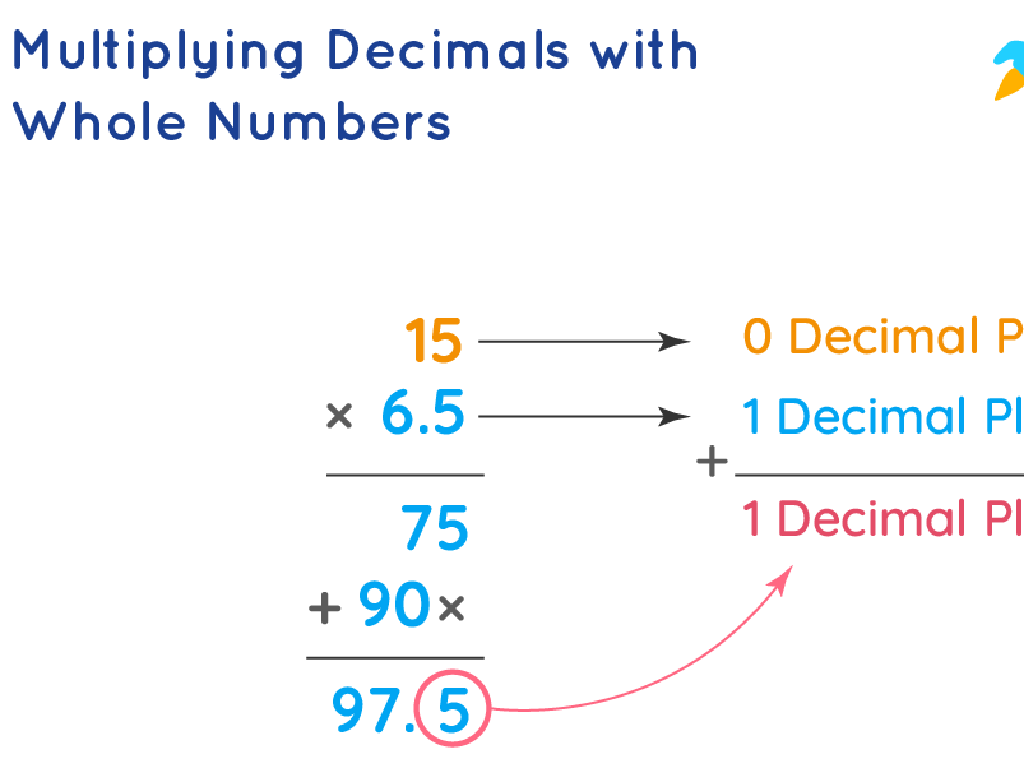Antebellum Period: Abolitionist And Proslavery Perspectives
Subject: Social studies
Grade: Fourth grade
Topic: Early 19Th Century American History
Please LOG IN to download the presentation. Access is available to registered users only.
View More Content
Exploring the Antebellum Period
– What was the Antebellum Period?
– Time before the Civil War, marked by division over slavery.
– Views of abolitionists vs. proslavery
– Abolitionists wanted to end slavery; proslavery supporters wanted to keep it.
– The impact of these perspectives
– These conflicting views led to tension and ultimately the Civil War.
– Learning from history
|
The Antebellum Period is a critical era in American history, just before the Civil War. It’s characterized by the stark contrast between abolitionist movements, which fought to end slavery, and proslavery advocates, who believed slavery was a necessary part of society. Understanding these perspectives helps students grasp the complexities of historical conflicts and the roots of the Civil War. It also emphasizes the importance of learning from the past to understand current social issues and the value of different viewpoints. Encourage students to think about how the lessons from this era can apply to modern discussions about justice and equality.
Understanding the Antebellum Period
– Time before the Civil War
– ‘Antebellum’ means ‘before the war’
– Era of change and conflict
– This period saw debates over slavery and states’ rights.
– Shaped America’s history
– Decisions and events then still affect America today.
|
The Antebellum Period is a significant era in American history that took place before the Civil War. This time is marked by the term ‘Antebellum,’ which literally means ‘before the war’ in Latin. During this period, the United States experienced rapid growth and change, but also deep conflict, especially over issues like slavery and the rights of states versus the federal government. These debates and conflicts were key factors leading up to the Civil War. It’s important for students to understand how this period set the stage for later historical events and has continued to influence the country’s development. Encourage students to think about how changes during this time might have felt for different people living in America.
Daily Life in the Antebellum Period
– Homes, jobs, and family in the 1800s
– People lived in simple houses, worked on farms or small businesses, and families were large.
– North vs. South lifestyle differences
– The North had more factories, while the South had plantations.
– Agriculture’s role in daily life
– Farming was the main job in the South, growing cotton and tobacco.
– Industry’s impact on society
– The North was developing industries, like textiles and railroads.
|
This slide aims to give students a glimpse into the everyday life of people during the Antebellum Period, highlighting the stark contrasts between the Northern and Southern states. Emphasize the simplicity of living conditions and the centrality of family life. Discuss how the North’s focus on industry and the South’s reliance on agriculture, especially plantations, shaped their economies and societies. Use examples like the cotton gin to illustrate how inventions affected agriculture and the growth of factories to show industrial progress. Encourage students to think about how these differences contributed to the tensions leading up to the Civil War.
The Abolitionist Movement
– Understanding abolitionism
– Abolitionism was a movement to end slavery.
– Key figures in abolitionism
– Leaders like Harriet Tubman and Frederick Douglass fought against slavery.
– The mission to end slavery
– Abolitionists worked to stop slavery in America and help enslaved people.
|
This slide introduces the Abolitionist Movement to fourth graders, explaining the concept of abolitionism as the effort to end slavery. Highlight important figures such as Harriet Tubman, who led slaves to freedom via the Underground Railroad, and Frederick Douglass, a former slave who became a powerful speaker and writer against slavery. Emphasize the goal of the movement: to abolish slavery throughout America and ensure freedom for all. Use this opportunity to discuss the values of equality and justice, and how individuals can contribute to positive change in society. Encourage students to think about what it means to stand up for what is right, even when it is difficult.
Understanding Proslavery Perspectives
– Defending slavery arguments
– Some people believed slavery was necessary for the economy and used the Bible to justify it.
– Slavery’s economic role in the South
– The South relied on slave labor for plantation and agricultural success.
– Abolitionist views contrast
– Abolitionists argued that slavery was morally wrong and fought for freedom for all.
|
This slide aims to explain the proslavery perspective during the Antebellum Period. It’s important to convey that while these views were held by some, they are not justifiable. The economic dependency on slavery in the South was due to the labor-intensive nature of their cash crops like cotton. Contrast these views with those of the abolitionists, who believed in the moral imperative to end slavery and fought tirelessly for this cause. Discussions should be handled sensitively, and students should understand the historical context without endorsing these outdated perspectives.
Key Figures and Events: The Fight for Freedom
– Harriet Tubman’s brave journey
– Led hundreds to freedom via the Underground Railroad
– Frederick Douglass’s powerful words
– Escaped slavery and became a leader who spoke for freedom
– ‘Uncle Tom’s Cabin’ and its impact
– A book that showed the harsh reality of slavery to many
– Understanding abolitionist efforts
– Abolitionists worked to end slavery and promote equality
|
This slide introduces students to important figures and events that shaped the abolitionist movement during the Antebellum Period. Harriet Tubman’s role in the Underground Railroad exemplifies courage and determination, leading many enslaved people to freedom. Frederick Douglass, through his eloquent speeches and writings, advocated for the abolition of slavery and equal rights. ‘Uncle Tom’s Cabin,’ a novel by Harriet Beecher Stowe, played a significant role in changing public opinion about slavery. It’s crucial to discuss the broader efforts of abolitionists who fought tirelessly against slavery and for the rights of African Americans. Engage students by discussing the significance of these figures and events in the context of American history and the ongoing struggle for civil rights.
Comparing Perspectives: Abolitionists vs. Proslavery
– Understanding the debate sides
– Abolitionists wanted to end slavery, while proslavery supporters wanted to keep it.
– Impact on the nation’s shape
– These views led to laws and conflicts that changed America.
– Empathy in historical context
– Putting ourselves in others’ shoes helps us understand their actions and beliefs.
– Critical thinking about history
– Asking questions about history helps us learn why people acted as they did.
|
This slide aims to introduce students to the complex perspectives during the Antebellum Period. It’s crucial to explain that abolitionists fought against slavery, believing in freedom for all, while proslavery advocates argued for slavery’s continuation, often for economic reasons. Highlight how these conflicting viewpoints contributed to the nation’s political and social development, leading to significant events like the Civil War. Encourage students to practice empathy by trying to understand why people held these beliefs and to use critical thinking to analyze the historical impact of these perspectives. Discussions should be guided sensitively, considering the maturity of fourth graders.
Class Activity: Role Play Debate on Antebellum Perspectives
– Split into abolitionists and proslavery groups
– Prepare your group’s arguments
– Use facts from today’s lesson to support your stance
– Present arguments in a debate
– Speak clearly and explain why you believe in your group’s view
– Listen and respond respectfully
– Remember to be polite and take turns speaking
|
This activity is designed to help students understand the different perspectives during the Antebellum Period by engaging in a role-play debate. Divide the class into two groups representing abolitionists and proslavery advocates. Each group will use information from today’s lesson to prepare their arguments. Encourage students to focus on key points and historical facts. During the debate, students should present their arguments clearly and listen to the opposing side. Emphasize the importance of respectful discourse and taking turns. Possible activities for different students could include acting as moderators, timekeepers, or note-takers to ensure a structured debate environment. This exercise aims to develop critical thinking and public speaking skills while deepening their understanding of the era’s complex social issues.
Reflecting on History: Abolitionist and Proslavery Perspectives
– Insights from the debate
– Historical impact on today
– How past beliefs shape our society now
– Share your lesson thoughts
– What did you find interesting or surprising?
– Discuss feelings about history
– It’s okay to have strong emotions about history
|
This slide aims to facilitate a reflective discussion among students about the abolitionist and proslavery perspectives during the Antebellum Period. Encourage students to think critically about what they learned from the debate and how the differing viewpoints of that era continue to influence modern society. Allow them to express their thoughts and feelings openly, fostering an environment where they can articulate their understanding and emotional responses to the lesson. This discussion will help them to connect historical events to the present day and recognize the importance of history in shaping our world.
Homework: Essay on a Historical Figure
– Write a one-page essay
– Choose a key figure from the lesson
– Could be an abolitionist or a proslavery advocate
– Describe their perspective
– Were they for or against slavery?
– Explain their impact on the Antebellum Period
– How did they influence society or laws back then?
|
This homework assignment aims to reinforce the day’s lesson on the Antebellum Period by having students engage with historical figures’ perspectives and their roles during that time. Encourage students to think critically about the motivations and actions of the figure they choose, whether they were an abolitionist fighting against slavery or a proslavery advocate. The essay should reflect an understanding of the figure’s stance on slavery and their influence on American society and politics in the early 19th century. Provide a rubric for the essay that includes clarity, historical accuracy, and the ability to convey the figure’s impact. Offer examples of key figures such as Harriet Tubman, Frederick Douglass, or John C. Calhoun to guide their selection.






